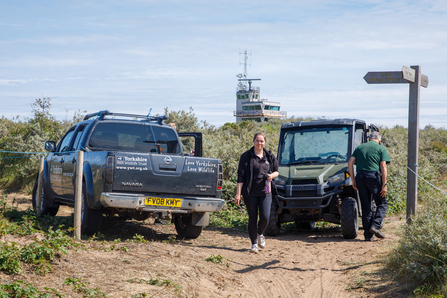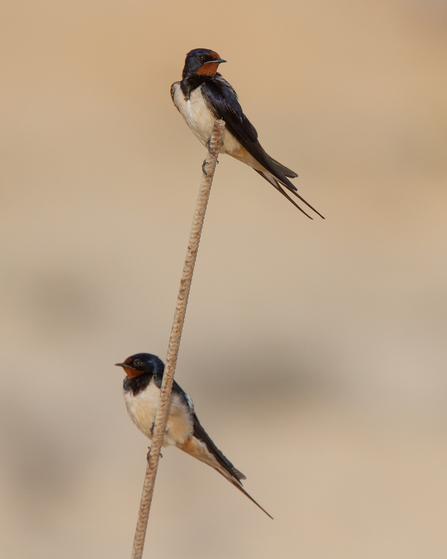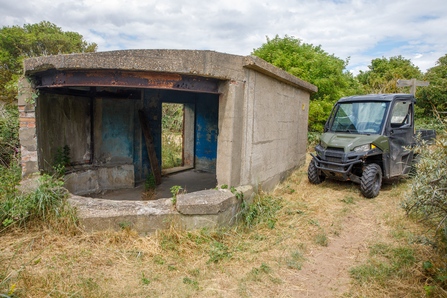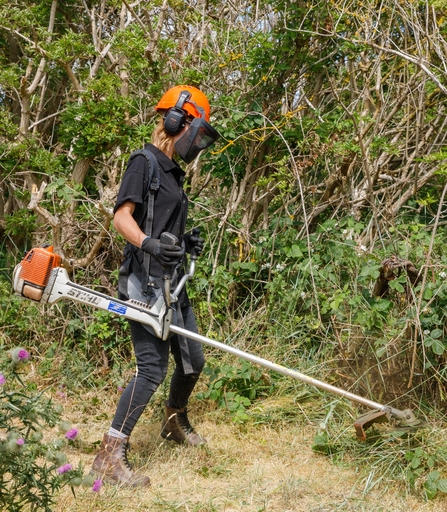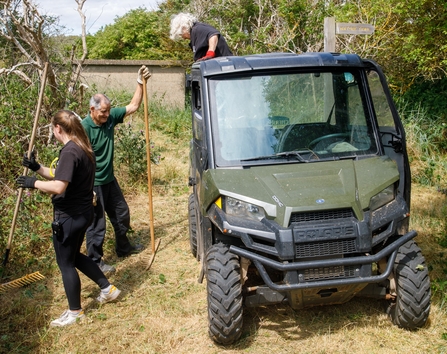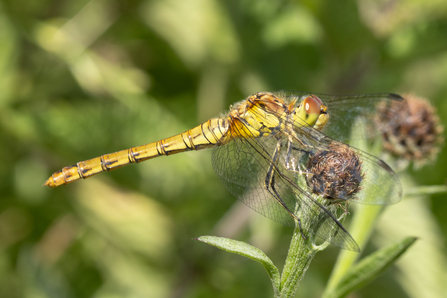Spurn has long been in my mind as a place to visit. Growing up in the south of England, the name would occasionally reach me when a sort of “bush telegraph” between birders brought news of some exotic bird or other that had made its way there. For this reason, I was delighted when Rachel, who leads the “Telling Our Story” volunteer team, suggested that for my first assignment, I head there for one of the reserve's regular conservation task days.
Driving eastwards out of Hull, it felt a bit as if I was off into nowhere. Roads narrowed and villages grew further apart, until leaving Easington I could sing out “I can see the sea”, recalling another memory of my childhood, when summer holidays were always on the coast.
Arriving at YWT’s Discovery Centre, Emma - team lead for the day - introduced me to everyone. Sam and Sammy, like Emma, are Voluntary Spurn Reserve Trainees, and Simon and Val are both long-serving Practical Conservation Volunteers.
“We’re brush-cutting today, right down at the end of the reserve”, Emma tells me. “It’s over five kilometres away” chipped in Simon. Immediate thoughts of having to lug the tools all that way were very quickly forgotten when I met two other essential members of the team, a pick-up truck and a utility buggy.


